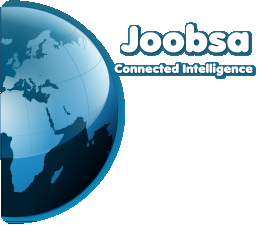
Retail
Digitizing the consumers experience

Reinventing Retail
Applying IoT In Retail
Micro-processors and unlimited Internet connectivity means we’ve transitioned from a retail world where the intelligence was all at the sales counter and back office to one that sees smart devices everywhere, and on just about anything. It’s a big concept, but it comes downs to this: Billions and eventually trillions of devices are being deployed and connected – everything from the point of sales systems to sensors at dressing room doors. They can differ wildly, but all have enough built-in intelligence to report on what they’re doing, and what’s going on around them. When connected, those devices can send data that can then be rolled up and analyzed in for example SaaS platforms to provide rich, invaluable insights about activity and status. Here’s a simple example for that: A motion sensor or security camera located at the gateway to a dressing room triggers a notice to portable devices carried by sales associates, or at a service counter. The sensor has logged someone standing there for more than, say, 10 seconds, so help is dispatched and shoppers get a better experience, because they’re not left waiting and the retailer can optimize their in-store staff. The salesperson’s device might be nothing more than a smart watch that vibrates and flashes a notice: “Customer waiting at dressing room B”. That sensor or camera, and that watch, are IoT “things”. So is the software that brings those “things” together which raises a flag that someone is waiting, and triggers that message.Applications
• Product tracking / traceability • Interactive consumer engagement and operations • Smart operations (dynamic local message targeting) • Smart operations (dynamic local message targeting) • Consumer intelligence (facial emotion recognition) • Mobile payments • Inventory management • Asset management Consumer demand for convenience, product availability, and both personalized and contextualized interactions will drive retailers to adopt multiple IoT technologies in the coming years. IoT also has big implications for the in-store marketing efforts of retailers and brands. Connected devices – from POS and cameras to readers and beacons – can all help drive better, easier experiences for shoppers. Driven by live data devices and systems, an “aware” store can deliver smarter messaging on screens of any size. Instead of pre-determined messaging, smart screens in an aware retail environment are providing shoppers deeper information about what they’re looking at, and influencing buying decisions, including up-sells. Smart systems will trigger content based on multiple contributing factors, including what’s under-performing and overstocked, what’s running out of stock, time of day, environmental conditions, online trending and countless other potential variables. Retailers can also market and merchandise based on shopping and buying patterns revealed through loyalty programs, online browsing and search trends. Bluetooth low energy beacons, when married to a retailer’s dedicated or partner shopping apps on phones, can generate visual heat maps that show how consumers move around stores. To generate even more detail it’s also possible to maintain individual privacy by anonymously triangulate and map how shoppers move around stores, based on their phone’s WiFi being activated. Retailers are looking for actionable insights to tailor what they offer to what consumers actually want. When they get that right, consumers tend to be happy, make purchases, and most importantly, come back for more. This highly-tuned, hyper-local and dynamic marketing and merchandising doesn’t happen without a back office system and store-level messaging platform. Those IoT nodes, that data, the many triggers and actions, all need to be aggregated and harmonized. Then a system is needed to dynamically turn insights into actionable, impactful messaging.






Retail
Digitizing the consumers experience

Reinventing Retail
Applying IoT In Retail
Micro-processors and unlimited Internet connectivity means we’ve transitioned from a retail world where the intelligence was all at the sales counter and back office to one that sees smart devices everywhere, and on just about anything. It’s a big concept, but it comes downs to this: Billions and eventually trillions of devices are being deployed and connected – everything from the point of sales systems to sensors at dressing room doors. They can differ wildly, but all have enough built-in intelligence to report on what they’re doing, and what’s going on around them. When connected, those devices can send data that can then be rolled up and analyzed in for example SaaS platforms to provide rich, invaluable insights about activity and status. Here’s a simple example for that: A motion sensor or security camera located at the gateway to a dressing room triggers a notice to portable devices carried by sales associates, or at a service counter. The sensor has logged someone standing there for more than, say, 10 seconds, so help is dispatched and shoppers get a better experience, because they’re not left waiting and the retailer can optimize their in- store staff. The salesperson’s device might be nothing more than a smart watch that vibrates and flashes a notice: “Customer waiting at dressing room B”. That sensor or camera, and that watch, are IoT “things”. So is the software that brings those “things” together which raises a flag that someone is waiting, and triggers that message.Applications
• Product tracking / traceability • Interactive consumer engagement and operations • Smart operations (dynamic local message targeting) • Smart operations (dynamic local message targeting) • Consumer intelligence (facial emotion recognition) • Mobile payments • Inventory management • Asset management Consumer demand for convenience, product availability, and both personalized and contextualized interactions will drive retailers to adopt multiple IoT technologies in the coming years. IoT also has big implications for the in- store marketing efforts of retailers and brands. Connected devices – from POS and cameras to readers and beacons – can all help drive better, easier experiences for shoppers. Driven by live data devices and systems, an “aware” store can deliver smarter messaging on screens of any size. Instead of pre-determined messaging, smart screens in an aware retail environment are providing shoppers deeper information about what they’re looking at, and influencing buying decisions, including up-sells. Smart systems will trigger content based on multiple contributing factors, including what’s under-performing and overstocked, what’s running out of stock, time of day, environmental conditions, online trending and countless other potential variables. Retailers can also market and merchandise based on shopping and buying patterns revealed through loyalty programs, online browsing and search trends. Bluetooth low energy beacons, when married to a retailer’s dedicated or partner shopping apps on phones, can generate visual heat maps that show how consumers move around stores. To generate even more detail it’s also possible to maintain individual privacy by anonymously triangulate and map how shoppers move around stores, based on their phone’s WiFi being activated. Retailers are looking for actionable insights to tailor what they offer to what consumers actually want. When they get that right, consumers tend to be happy, make purchases, and most importantly, come back for more. This highly- tuned, hyper-local and dynamic marketing and merchandising doesn’t happen without a back office system and store-level messaging platform. Those IoT nodes, that data, the many triggers and actions, all need to be aggregated and harmonized. Then a system is needed to dynamically turn insights into actionable, impactful messaging.
© Joobsa 2018
mobile version





















